I have already written a few lines about this lens in my Exakta Varex IIa review where I have published some film shots taken with it. Recently I have purchased an adapter which allows me to attach any EXA mount lens to my Canon DSLR so it is about time to inspect a little deeper what is the Meyer Trioplan 100mm capable of.
The Cooke Triplet
The Meyer Trioplan is a classic triplet (it has three strong lens elements separated by sizable air spaces). It is eventually a modern version of the Cooke triplet which was developed by H. Dennis Taylor (1862 – 1943) in 1893.
The simplest design that is capable of correcting all of the seven Seidel aberrations over a wide field of view is the Cooke triplet. H. Dennis Taylor invented this in 1893, using the advances of Seidel’s theory. It is named after the optical company in York, England, for which Taylor worked at the time, Cooke and Sons (later to become Cooke, Troughton and Sims). The lens is described in two very interesting United States patents, Nos. 540,132 (1895) and 568,053 (1896). Taylor’s designs, despite their antiquity, are close to optimum for the aperture and field he intended, given the glass types available in his day. The triplet uses two of the principles of a good design. First, the Petzval sum is corrected by the use of spaced positive and negative lenses, as described in Chapter 9 on telephoto lenses. Secondly, it has approximate front-back symmetry about a central stop, to control the odd-order aberrations, coma, distortion, and transverse color.
Source: Optipedia
Even though countless variants had been patented of the Triplet designs they cannot be considered as original inventions rather routine designs based on Taylors work.[1]
Similar lenses: Anticomar, Cassar, Novar, Meritar, Radionar, Trinar, Triotar, Voigtar, Eurygon.

Fun facts
- Taylor developed his own mathematical tools to design lenses and if we can believe him he never traced any rays. His method was to design and optimize the lens on paper until he reached the best possible solution and then he got the lens manufactured. Finally, changes were recommended based on the experiments on a testbench with the prototype.[1]
- Cookie of York is still an existing company with slightly different profile and name Cooke Optics Limited.
- Even though triplets are simple lenses it was difficult to manufacture them initially because the position of the lens elements has to be very precise. Therefore many manufacturers preferred to produce four element lenses instead.[1]
- Despite that the Triplet design is strongly outdated today, it is still used in the case of many lower-end cameras.
Characteristics
The interestingness of the Meyer Optik Trioplan is the unusually large aperture (f/2.8) which is remarkable because triplets are usually moderate speed lenses for good reasons.
This relatively high maximum aperture comes with a price as the lens shows a wide range of aberrations when used in this setting. On the other hand, this makes the lens somewhat unique with an interesting footprint some might use for artistic purposes.
The out of focus areas (bokeh) looks very interesting at f2.8, especially when highlights are involved in the background. The light circles (for examples traffic lights) are surrounded by light circles which makes the bokeh really special and as many say psychedelic. In addition, there is a heavy glow around the objects in the in-focus areas, most notably around highlights. This effect can be very dramatic or almost not notable depending on the conditions of the shoot. Last but not least the produced image is rather soft all around the frame in most cases wide open.

Many buy and uses this lens because of the way it behaves at widest aperture, but we have to admit that this lens is not a bad performer at all if stopped down just a slight bit. At f/4 and below the lens produces sharp images without glow or distractive psychedelic bokeh. In fact, it has some properties which are very respectable. The lens produces a very low amount of purple fringing around high contrast areas even at modern standards. The lens is definitely sharp enough for most purposes an due to the almost perfectly round iris it produces wonderful creamy bokeh. Furthermore, due to the staples aperture ring, it can be appropriated by videographers as it allows smooth continuous aperture control.

How the Trioplan looks like
My Trioplan came as a part of a beautiful Exakta kit along with the original box and invoice.
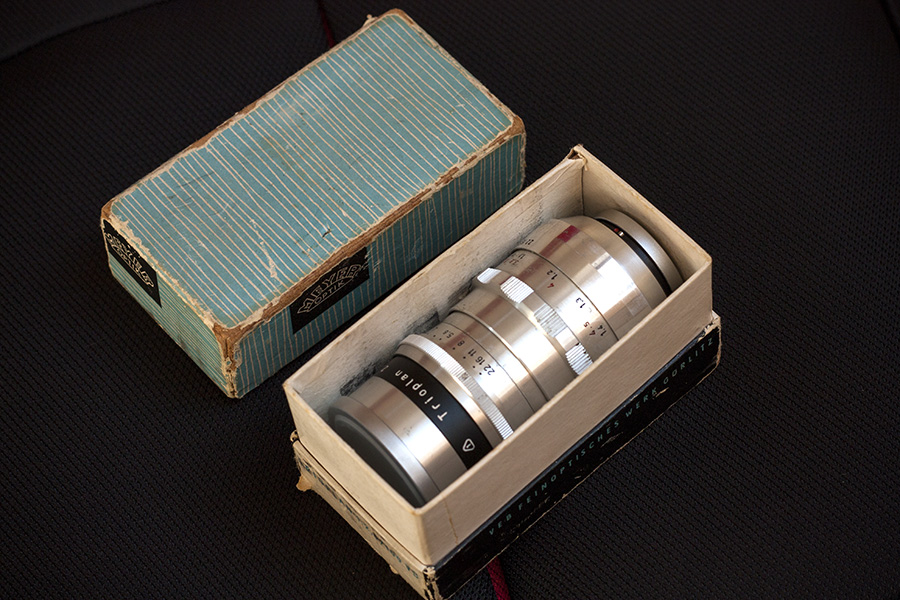
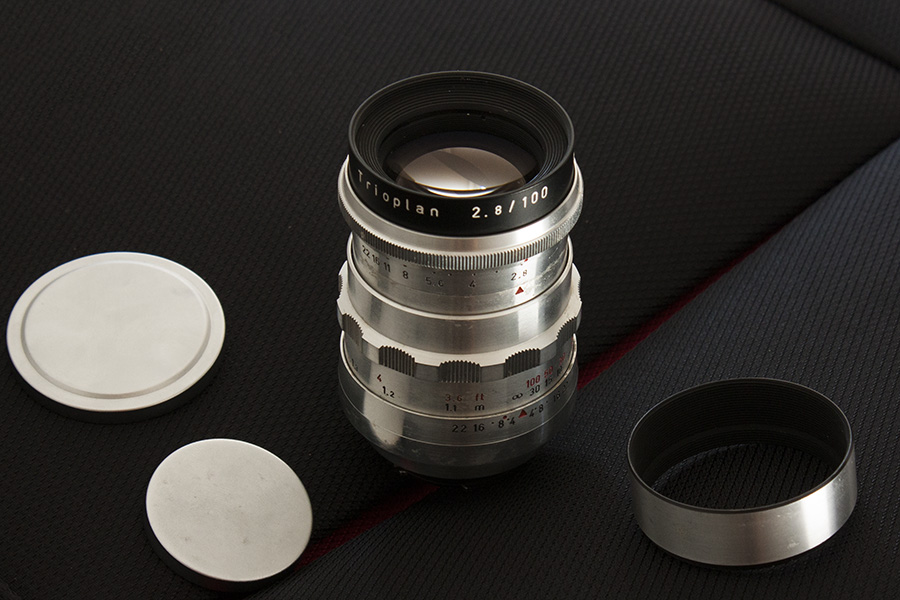
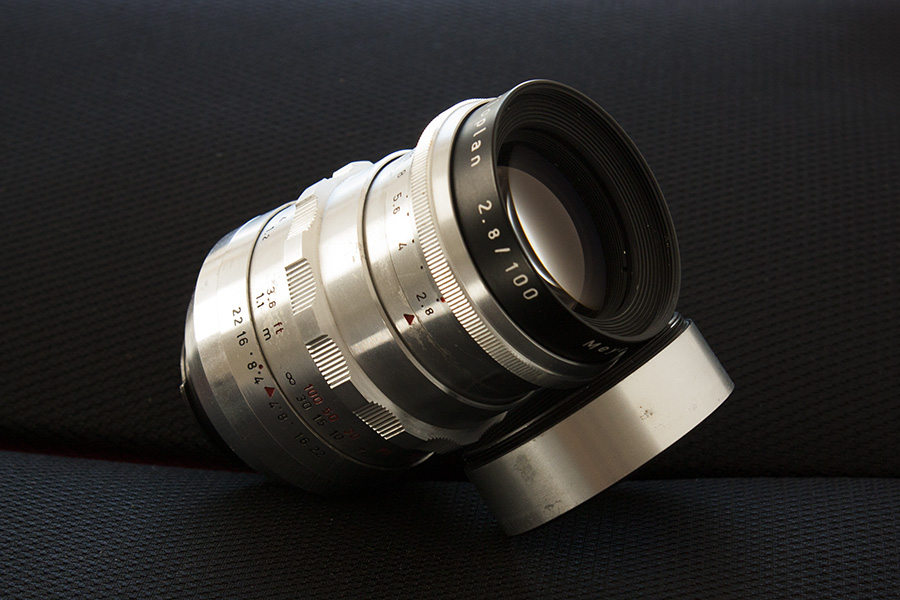
The lens can be disassembled very easily almost without any tools. I wanted to unscrew the lens hood only but as a side effect, I have managed to remove an entire lens group. It is not that bad as it sounds because eventually, I could take advantage of the accident. I could clean up the dust from the inside of the lens and fortunately, the assembly went well and the lens performs just the way it did before. Last but not least you can get a very intimate view of the wonderful circle shaped iris of the Trioplan.
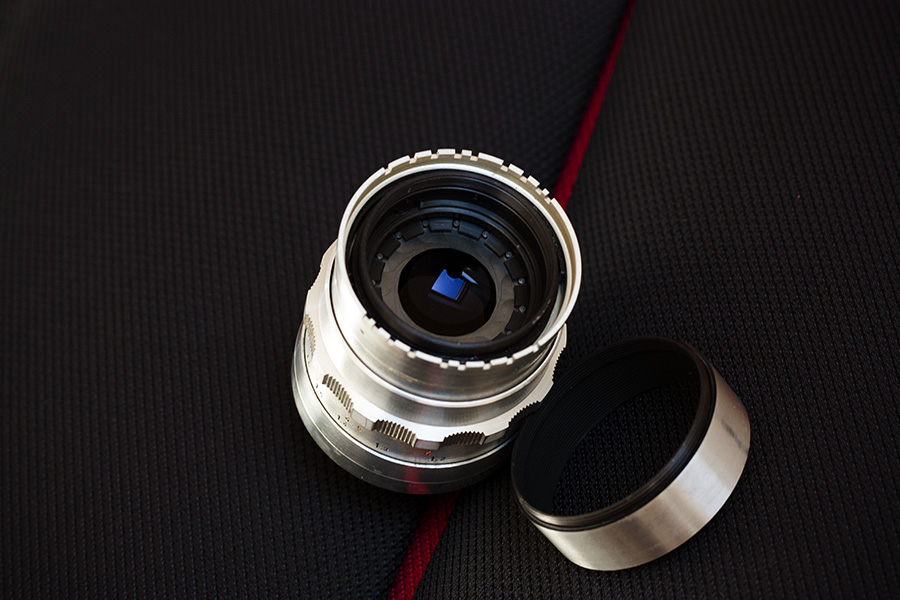
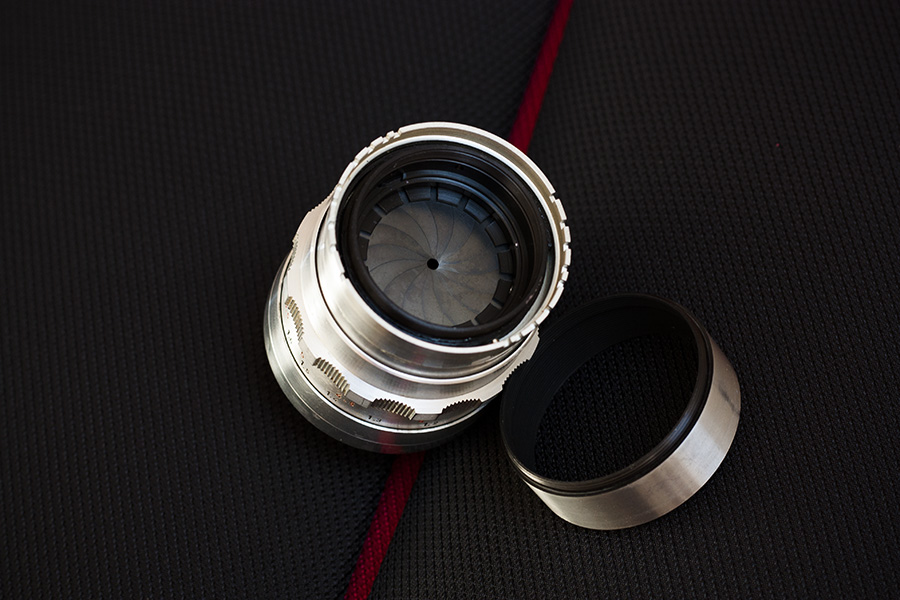
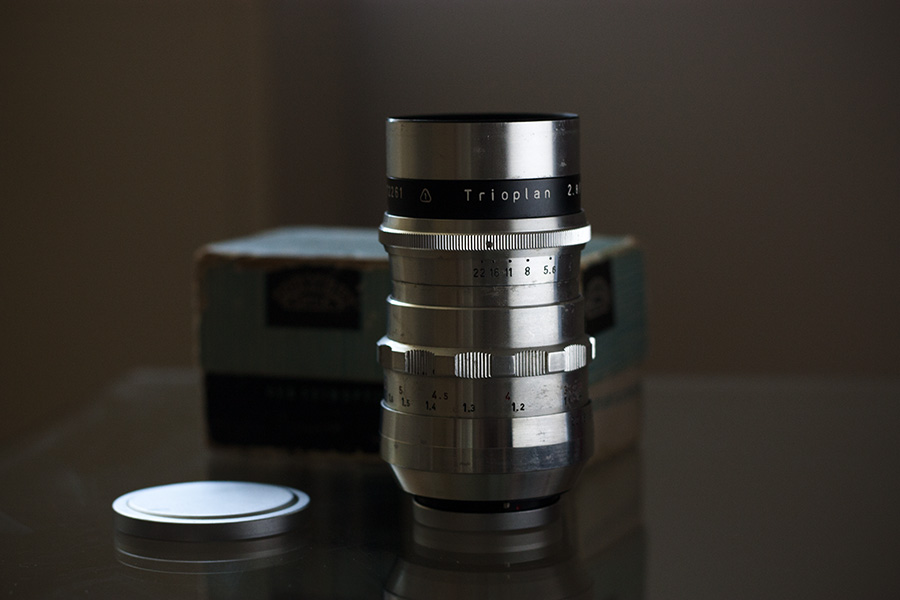
Trioplan on Canon 450D
My film shoots with this lens (with Exakta Varex IIa) can be seen here.
Wide open softness and glow can be beneficial when shooting portraits, although I admit isn’t fit all portraits.
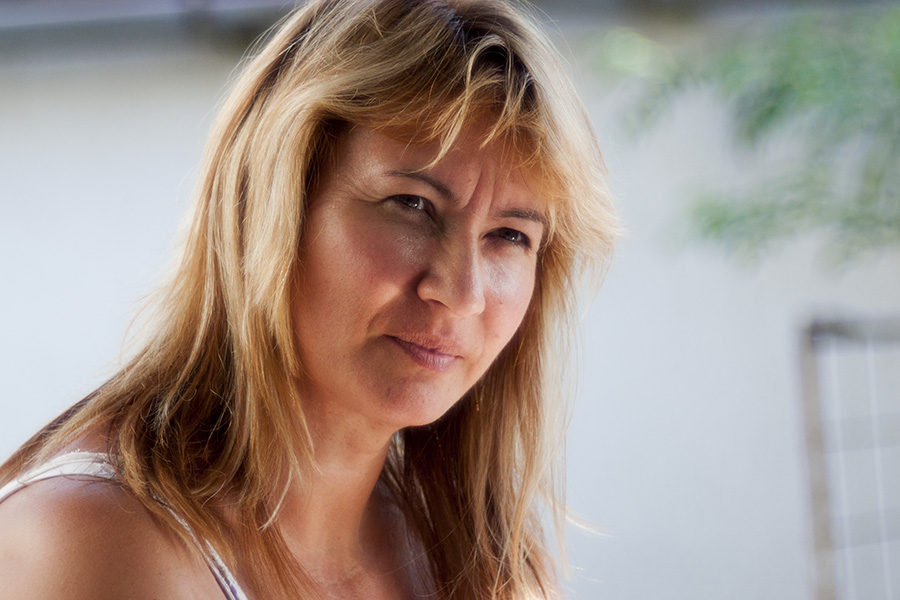
If you stop down the lens a bit, you are going to get a very respectable result.
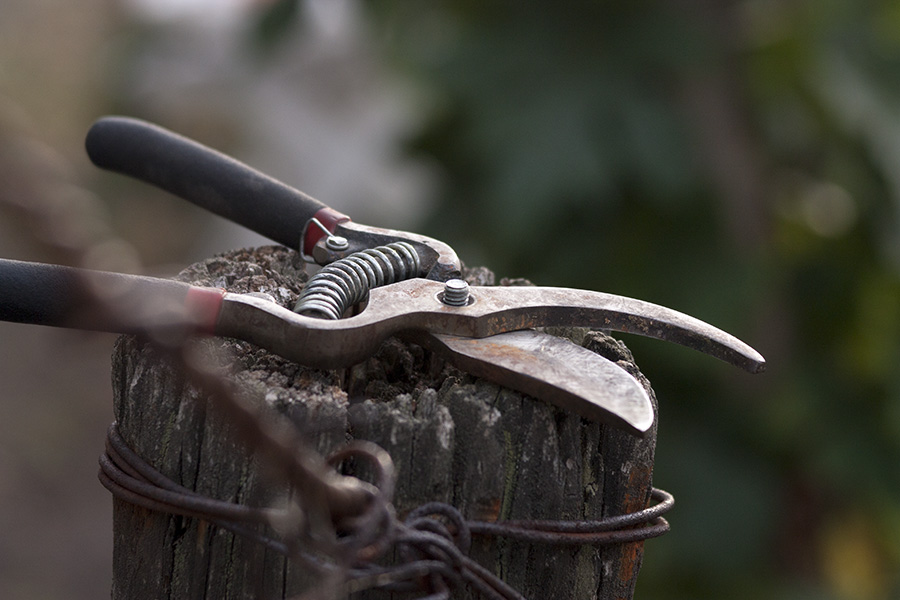
Recommendation
Pros
- Reasonably good image quality when stopped down
- Very low chromatic aberration
- Circular iris
- Good bokeh when stopped down
- The special character at maximum aperture (crazy bokeh)
- Continuous aperture selection ring without stops/clicks
- Good built quality
- Aged glue can’t be a problem between lens elements as the number of cemented elements is zero
- Focusing is very smooth (on my instance)
- Cheap
Cons
- The outdated optical formula does not deliver cutting-edge performance
- Very soft and loaded with aberrations at maximum aperture
The Meyer Optik Trioplan is a fun lens to use, it is out of the question. It is also a cheap lens so the investment won’t make your family mad on you.
I would recommend to those who like to experiment with old lenses hoping to achieve some unusual results due to the character of the vintage glass. On the other hand, it is not a toy so you can rely on it when you need good image quality, you just need to avoid f/2.8.
Videographers could also appreciate this lens due to the click-less aperture ring so they can change aperture very smoothly while filming.
But this lens is not for everyone of course if you are looking for top image quality or features like auto-focus than you should definitely look elsewhere.
Links and references
- [1] Rudolf Kingslake, A History of the Photographic Lens (Great description of the Cooke Triplet)
- My shoots on film with the Trioplan
- Markus Keinath – Meyer-Goerlitz-Trioplan-100mm-2.8 (interesting article and really nice samples)
- Optipedia Triplets (design principles and technical discussion about triplets)
- Taylor, Taylor & Hobson Cooke Lenses on digital camera (original Cooke Triplet tests)
- EOS 350D with TTH Cooke Anastigmat 5 1/2 in. f/4.5, at f/4.5
- EOS 350D with TTH Cooke Anastigmat 5 1/2 in. f/4.5, at f/8, low contrast light
- EOS 350D with TTH Cooke Anastigmat 5 1/2 in. f/4.5, at f/8, high contrast light
- Cooke Anastigmat on EOS 5D
- Uspensky Cathedral with the Cooke Anastigmat
- Autumn Colours, Autumn Bokeh
- An Unscientific Comparison: Cooke vs. Elmarit-R
- Another Cooke Anastigmat 5 inch f/4.5 on EOS 5D


